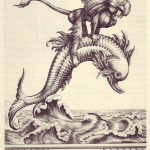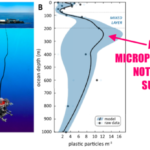So my current research focuses on the influence of canyon topography on the biodiversity and body size of deep-sea invertebrates. To address this requires lots of cores, sorting, and identification. My current favorite species is this tube-building polychaete (50-70mm). Another great example of the wondrous biodiversity of deep-sea mud.
So far only one individual in all my core samples. Currently, I have no idea what species or genus this guy or gal is so I am tentatively calling it Kraken Worm!. Give me a break! I’m a mollusc man. Post below if you recognize this beast. Click for a larger picture.






Its an Ampharetidae, maybe an Amphisamytha even, which is found at vents at the EPR, JdF and Lau as far as I know. When I get into lab tomorrow I’ll check my guides.
Can anyone point me to current information on the paper nautilus, or the great argonaut? I am writting a reaserch paper on this facsinating creature but I can’t seem to find the info I need, can anyone help?
isn’t that the thing that came out of the lake and grabbed frodo at the gateway to the mines of moorea? i mean a little one of those?
I know what that is! That’s grossss.
Looked at the Vent Handbook at Amphisamytha galapagensis, looks very similar, but the largest recorded specimen was only about 2cm (from Guaymas Basin). Yours seems a larger, slimmer, smoother ventral side and longer anterior setae. You should send specimens to Dr. Hourdez at Roscoff, he’d be interested.
You might also ask Dr. Greg Rouse at SIO. Or I can send it out to our Species ID listserv, if you like – there’s a bunch of worm folks on there.
Also, Rick – mines of Moorea? :>)
When it is determined as to what exactly that is, I’d like to know, so please post it.
Only because that is one of the creepiest looking things I have seen in awhile. It looks like it should be some horribly parasitic type thing that could cause the end of the world. (But don’t tell him/her I said that).
…there is some weird stuff down there…thanks for showing us!
Doing some more research on Amphisamytha got to go with Kevin.
I think that’s cousin George. We haven’t seen him since that 2 week bender in Nandi.
(I have no idea, but please tell us when you find out. I think the tentacles make it quite festive looking.)
Not Amphisamytha which is in the subfamily Ampharetinae. This belongs to subfamily Melinninae. Members of this subfamily have small capillary neurosetae in the first 3-4 setigers (absent in Ampharetinae), the uncini have 1 row of teeth above the base (Ampharetinae have several rows), some of the genera have a postbranchial dorsal membrane and a pair of big curved hooks on segment 3, and all genera lack paleae. There’s about 8 genera; I think most of them are in Fauchald’s 1972 key.
Leslie, good suggestion. Although difficult to see in these pics if there are capillary neurosetae in setigers 1-3, and of course uncini would be impossible to see at that resolution. I’ll have to take a look at Fauchald when I am back in the lab.
I wonder if craig made any headway on this ID?
True but one of the large hooks is visible in the anterior shot. Also the general appearance is unmistakeable. Craig – you can call me if you need worm help. Linda Kuhnz can give you my phone & email.